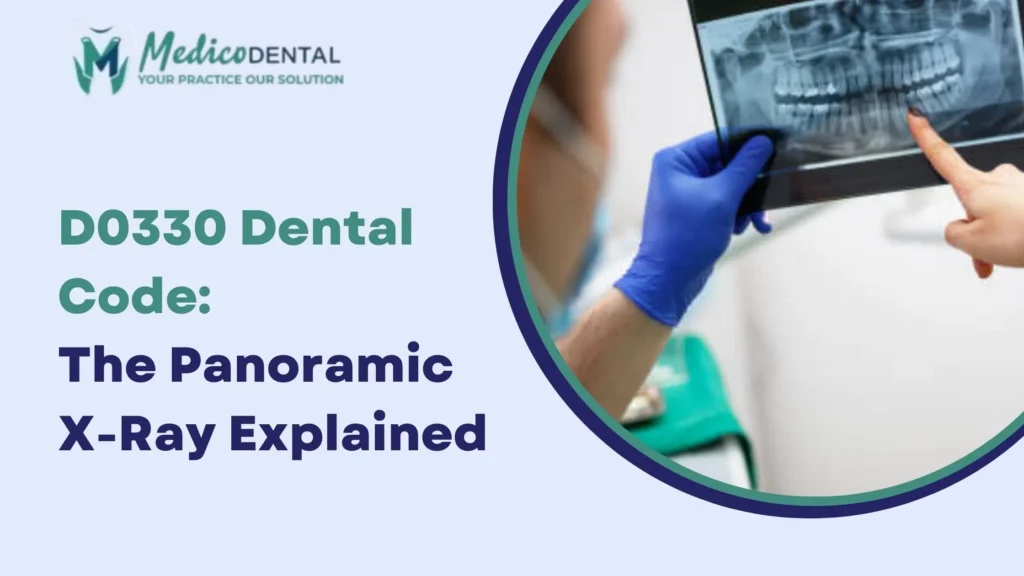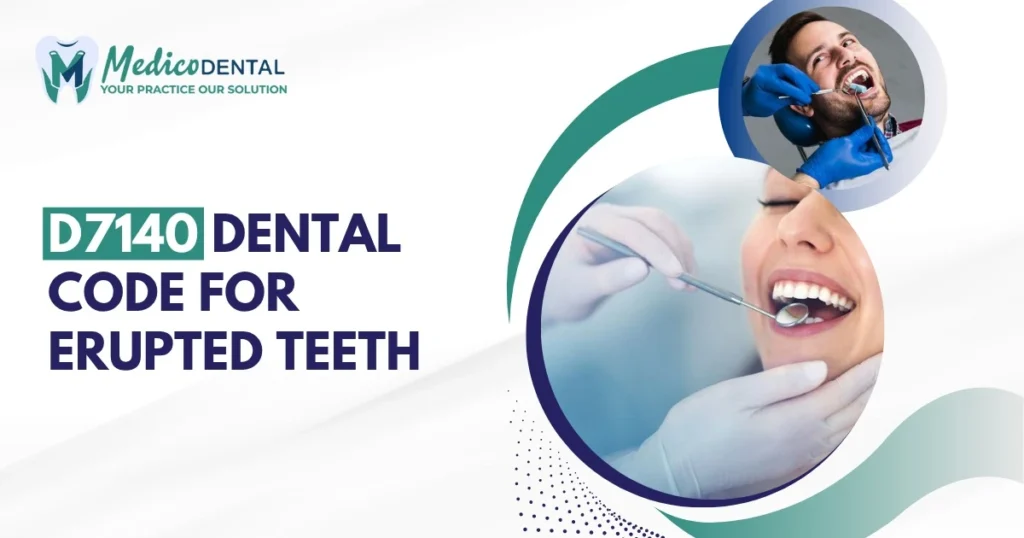What Is a Cone Beam Dental Code?
Cone Beam Computed Tomography (CBCT) is a crucial imaging technology used in modern dental practices to capture detailed 3D images of a patient’s teeth, jaws, and surrounding structures. It aids in accurate diagnosis, treatment planning, and implant placement. However, to ensure proper billing and insurance reimbursement, it’s essential to use the correct CBCT dental codes. These codes help streamline the documentation and billing process, ensuring that both the healthcare provider and patient are correctly compensated.
What Are Cone Beam Dental Codes?
Cone Beam Dental Codes are part of the Current Dental Terminology (CDT) codes used to classify various dental procedures, including CBCT imaging. These codes are essential for accurately documenting the services provided during dental exams and treatments. By identifying the specific type of scan or imaging service performed, dental professionals can communicate clearly with insurance companies and other healthcare providers to ensure appropriate reimbursement.
These codes cover a wide range of imaging types, from limited field-of-view scans to full jaw scans, and even more specialized scans like those of the temporomandibular joint (TMJ). Understanding and using the correct CBCT code is vital for accurate billing and insurance processing.
Flipper Dental Code is another term you may encounter for a temporary or removable dental prosthesis, though it’s not directly related to CBCT imaging, it plays a role in dental billing and should be correctly categorized when dealing with dental procedures.
Why Are They Important in Dental Practices?
Proper use of Cone Beam Dental Codes is important for several reasons:
Accurate Billing
These codes help ensure that dental procedures are billed correctly to avoid claims denials.
Insurance Reimbursement
Insurance companies rely on these codes to determine the appropriate reimbursement for dental imaging services.
Efficient Workflow
Using standardized codes streamlines administrative tasks, reducing confusion and saving time for dental professionals.
Compliance
Correct use of these codes ensures that practices are compliant with healthcare regulations and insurance requirements.
Types of Cone Beam Dental Codes
CBCT codes are divided into two main categories: Capture and Interpretation Codes and Capture Only Codes. Here’s a breakdown of these categories and the codes within each.
Capture and Interpretation Codes
These codes are used when both the capture of the scan and its interpretation are performed by the same practitioner. These include:
D0364: Limited Field of View
This code applies when the scan captures a small area, usually a single tooth or a small region of the jaw, providing a limited view.
D0365: Mandible (One Full Dental Arch)
Used for a full 3D scan of the lower jaw, this code is applicable when imaging one full dental arch on the mandible.
D0366: Maxilla (One Full Dental Arch)
This code applies when a scan is taken of one full dental arch on the upper jaw (maxilla).
D0367: Both Jaws
This code is used when both the upper and lower jaws are captured in the scan, offering a comprehensive view of the patient’s dental structure.
D0368: TMJ Series
When a scan is specifically focused on the temporomandibular joint (TMJ), this code is used to evaluate the health and function of the jaw joint.
Capture Only Codes
These codes are used when the scan is performed, but the interpretation is done by a different practitioner or billed separately.
D0380: Limited Field of View
This code is used for a limited field-of-view scan, similar to D0364, but with the interpretation done by someone other than the practitioner who performed the scan.
D0381: Mandible (One Full Dental Arch)
This code is used for a scan of the lower jaw when the interpretation is not performed by the same practitioner.
D0382: Maxilla (One Full Dental Arch)
This code is used when the upper jaw is scanned, but the interpretation is done separately.
D0383: Both Jaws
Similar to D0367 but for cases where the scan is performed by one practitioner and interpreted by another.
D0384: TMJ Series
Used when the scan focuses on the TMJ, but the interpretation is handled by a different practitioner.
How to Choose the Right Cone Beam Dental Code
Choosing the correct Cone Beam Dental Code is crucial for accurate billing and smooth insurance claims processing. Below are the key factors to consider:
Understanding the Area of Scan
The first step in selecting the right code is identifying the area being scanned. Is it a small section of the jaw, or does it cover the full mouth or both jaws? Understanding the area of the scan will help you choose between a limited field-of-view scan or a full jaw scan.
Determining Whether the Interpretation is Done by the Same Practitioner
Another important factor is whether the practitioner performing the scan is also interpreting it. If the scan and interpretation are done by the same practitioner, the “Capture and Interpretation” codes should be used. If the scan is performed by one practitioner and interpreted by another, then the “Capture Only” codes are appropriate.
By understanding these key factors, dental professionals can confidently choose the correct code, ensuring proper documentation and reimbursement for the services provided.
Cone Beam Dental Code for TMJ Imaging
What is the TMJ Series Code?
The TMJ (Temporomandibular Joint) Series code is used specifically for imaging of the TMJ, a critical joint that connects the jaw to the skull. The temporomandibular joint is essential for functions like chewing and speaking, and imaging of this area is important for diagnosing disorders related to jaw pain, limited movement, and other symptoms.
In the world of Cone Beam Computed Tomography (CBCT), the TMJ series typically involves capturing a set of 3D images that provide clear details of the joint’s structure, revealing issues such as misalignment, inflammation, or structural damage.
The Cone Beam Dental Codes for TMJ Imaging are:
D0368: TMJ Series (Two or More Exposures)
This code is used when imaging captures both TMJ joints or provides multiple views to assess the joint’s condition. It’s designed for a more comprehensive analysis of the joint, typically using multiple exposures to get a 3D representation.
D0384: TMJ Series (Capture Only)
This code is used when the scan is performed by one practitioner but interpreted by another. Like D0368, it’s intended for detailed analysis of the TMJ but is billed separately for the scan and interpretation.
When to Use D0368 or D0384
Choosing between D0368 and D0384 depends on who is interpreting the images:
- Use D0368 when both the capture of the scan and its interpretation are performed by the same practitioner. This is typically the case in a dental practice where the same provider handles both the scan and its assessment.
- Use D0384 when the scan is captured by one practitioner, but the interpretation is done by a separate individual. This often happens when a specialist or radiologist interprets the CBCT images after the scan is completed.
Impact of Cone Beam Dental Codes on Billing and Reimbursement
How Codes Affect Reimbursement
Cone Beam Dental Codes play a critical role in determining how much a dental practice gets reimbursed for CBCT imaging. These codes guide insurance companies in understanding what procedure was performed, what the costs are, and whether the service is covered by the patient’s insurance plan.
When codes are used correctly, they ensure that both the dentist and the patient are fairly compensated for the imaging service. On the other hand, if incorrect codes are used, reimbursement may be delayed, or claims might be denied. This makes it essential for dental practitioners to use accurate and specific codes to avoid complications with insurance billing.
For example, the D0368 code for TMJ imaging may be reimbursed differently than the D0384 code, depending on whether the interpretation is included. Correct code selection directly impacts the payment process and the speed at which the practice receives reimbursement.
Importance of Correct Coding for Insurance Purposes
Correct coding is crucial for insurance purposes because it ensures that the correct reimbursement is received for services rendered. Insurance companies rely on these codes to assess the necessity and scope of treatment. If a dental provider uses an incorrect code or fails to match the procedure with the appropriate code, the claim could be denied, leading to lost revenue and additional administrative work to resolve the issue.
Moreover, using the wrong code could potentially put the dental practice at risk for audit or fraud allegations, as insurance providers expect complete transparency in billing. Correct use of CBCT codes ensures that the practice remains compliant with insurance regulations and avoids unnecessary complications.
Common Mistakes to Avoid with Cone Beam Dental Codes
Incorrect Code Selection
One of the most common mistakes in dental billing is the incorrect selection of CBCT codes. Many dental professionals are tempted to choose the first code that seems closest to the procedure performed, without fully understanding the nuances of the service provided. For example, using a D0364 (limited field of view) when a full jaw scan (D0367) is done, or vice versa, can lead to issues with reimbursement.
Always ensure that the correct code is used based on the scope of the scan and whether interpretation is included. Take extra care when choosing between Capture and Interpretation Codes and Capture Only Codes.
Misunderstanding Coverage and Interpretation
Another common mistake is misunderstanding coverage and interpretation. Many dental professionals fail to recognize when the interpretation of the scan is performed by someone other than the one who captured the scan. This can lead to the wrong code being used and a denial of insurance claims.
It’s important to keep in mind that certain codes apply only when the same practitioner performs both the scan and its interpretation, while others should be used when a different practitioner is interpreting the results.
Conclusion
Cone Beam Dental Codes are crucial for accurately documenting CBCT imaging procedures, ensuring proper reimbursement for both dental professionals and patients. Using the correct codes helps streamline the billing process, avoid insurance claim denials, and maintain compliance with industry standards. To ensure accuracy, it’s important to choose the right code by understanding the field of view, the area being scanned, and whether the interpretation is done by the same practitioner. For TMJ imaging, select the appropriate code based on whether the interpretation is performed by the same practitioner or not. Additionally, avoid common mistakes by double-checking your code selections to prevent incorrect coding or misunderstandings of coverage.
FAQs
What’s the difference between D0364 and D0367?
Ans. D0364 refers to a limited field of view, often used for smaller areas of the jaw, while D0367 is for imaging both jaws, offering a more complete view of the patient’s dental structure.
Can I use D0368 for a single TMJ scan?
Ans. No, D0368 is specifically for a series of TMJ scans (at least two exposures). If you’re only capturing a single TMJ joint, this code would not be appropriate.
If a scan is done by one practitioner and interpreted by another, which code should I use?
Ans. In this case, you would use D0384, which applies to TMJ scans when the capture and interpretation are done by different practitioners.
Are Cone Beam Dental Codes the same for all dental insurance plans?
Ans. Not necessarily. Coverage and reimbursement can vary depending on the insurance provider. It’s important to check with the insurance company to confirm the eligibility of the CBCT procedure and the correct code to use.



